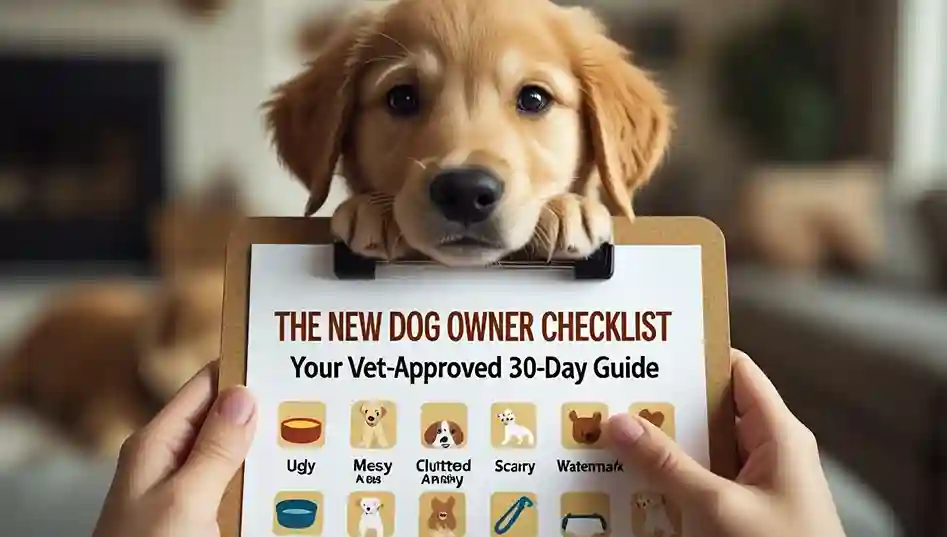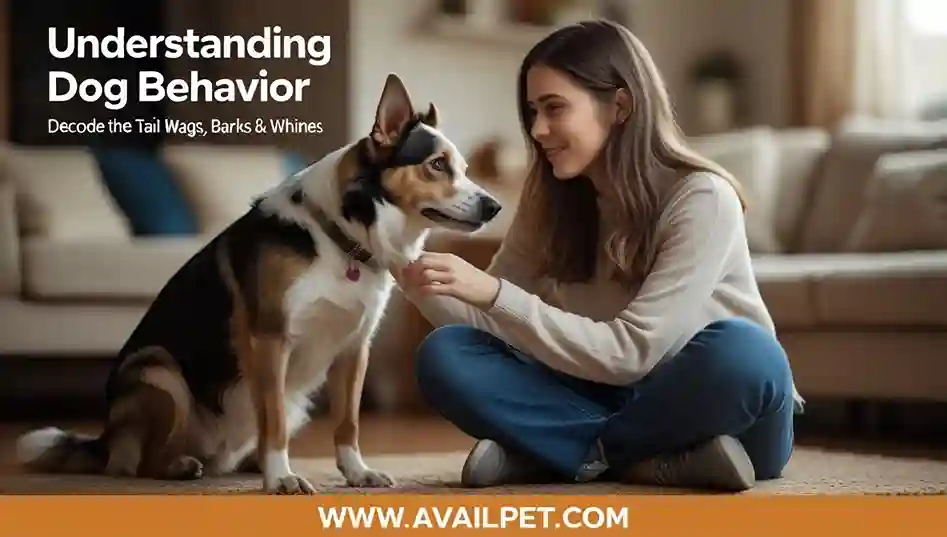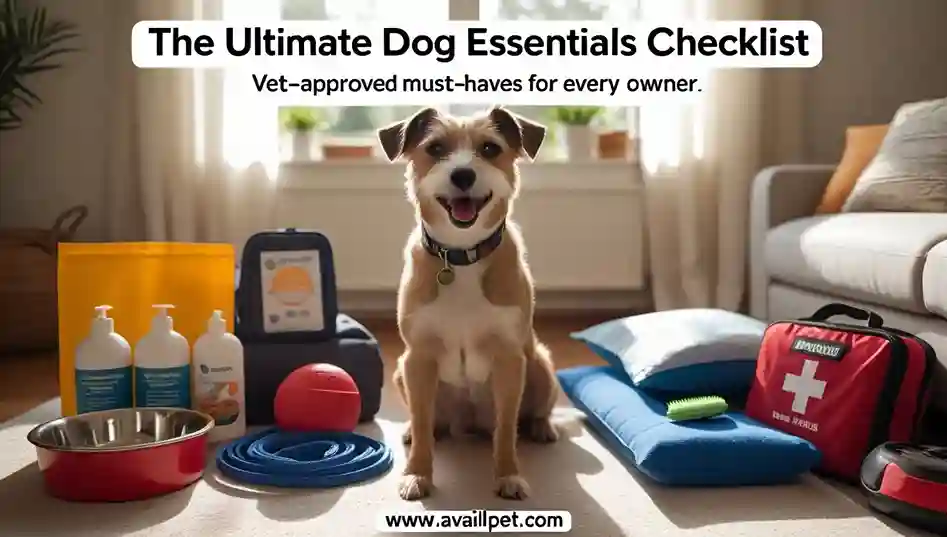That chewed-up shoe or gnawed furniture leg is a frustrating sight for any dog owner. But before you get upset, it’s crucial to understand that dog chewing is a completely natural and instinctive behavior. The key is figuring out why your dog is chewing and redirecting that energy appropriately, a process that is a fundamental part of our guide to understanding dog behavior.
Is your puppy teething, is your adult dog bored, or could it be a sign of an underlying anxiety or health issue? This vet-reviewed guide breaks down the five main reasons behind destructive dog chewing and provides actionable, positive solutions for dogs of all ages, from puppies exploring the world to seniors seeking comfort.
Stop the destruction and restore peace to your home. Let’s transform your dog’s chewing from a problem into a positive outlet.
Key Takeaways: Dog Chewing
Before we dive into the solutions, here are the essential facts every dog owner should know about chewing behavior.
- 🐶 Natural Instinct: Chewing is a natural canine behavior that provides mental stimulation, dental health benefits, and stress relief.
- 👶 Age Matters: Puppies chew primarily for teething relief and exploration, while adult dogs often chew due to boredom or anxiety.
- 🔍 Underlying Causes: Destructive chewing usually indicates unmet needs like insufficient exercise, mental stimulation, or proper training.
- 🛡️ Prevention First: The most effective approach involves providing appropriate chew toys and thoroughly puppy-proofing your home.
- 🏥 Health Check: Sudden changes in chewing behavior can signal dental issues, nutritional deficiencies, or other medical problems requiring veterinary attention.
“At a Glance” Comparison Table: Types of Dog Chewing
| Chewing Type | Typical Causes | Recommended Solutions |
|---|---|---|
| Puppy Teething | Pain relief, exploration, curiosity | Frozen chew toys, puppy teething rings, supervised chewing sessions. |
| Boredom Chewing | Lack of mental/physical stimulation | Interactive puzzle toys, increased exercise, food-dispensing toys. |
| Anxiety Chewing | Stress relief, separation anxiety | Calming aids, establishing routines, behavior modification training. |
| Hunger Chewing | Nutritional deficiencies, hunger | Dietary review, food-dispensing toys, scheduled feeding times. |
| Medical Chewing | Dental pain, gastrointestinal issues | Veterinary consultation, dental chews, appropriate medical treatment. |
Understanding Why Dog Chewing: The 5 Main Reasons
Understanding the motivation behind your dog’s chewing is the first step toward finding an effective solution. Here are the primary reasons dogs chew.
Puppy Development: Teething and Exploration
For puppies aged 3-6 months, chewing is essential for teething relief and exploring their world. Just like human babies, puppies experience discomfort as their adult teeth emerge, and chewing helps soothe their sore gums. They also use their mouths to investigate objects, much like human infants use their hands.
Boredom and Lack of Stimulation
Adult dogs often chew out of sheer boredom. Without adequate physical exercise and mental stimulation, chewing becomes a self-rewarding activity that passes the time. This is particularly common in high-energy breeds and dogs left alone for long periods.
Anxiety and Stress Relief
Chewing releases endorphins that help dogs self-soothe during stressful situations. Separation anxiety, noise phobias (like fear of thunderstorms), or changes in routine can trigger anxious chewing. The rhythmic motion provides comfort similar to how humans might bite their nails or tap their feet when nervous.
Hunger and Nutritional Needs
Some dogs chew non-food items due to nutritional deficiencies or hunger. This behavior, called pica, can indicate that your dog’s diet is lacking essential nutrients or that they need more frequent feeding. Always rule out dietary causes before assuming the chewing is purely behavioral.
Medical and Dental Issues
Underlying health problems can cause sudden changes in chewing behavior. Dental pain, gastrointestinal issues, or other medical conditions may drive a dog to chew in an attempt to find relief. Any abrupt onset of chewing, especially in older dogs, warrants a veterinary examination.
Age-Appropriate Chewing Solutions
Different life stages require different approaches to managing chewing behavior. Here are targeted solutions for each phase of your dog’s life.
Puppy Chewing: Teething Solutions and Training
Puppies need gentle, soothing options for their developing teeth. The Kong Puppy Toy is perfect as it can be frozen to provide cooling relief. For training, always redirect to an approved toy like the N-Bone Puppy Teething Ring and reward with small, soft training treats when they make the right choice. Supervise all chewing sessions and rotate toys to maintain interest.
Adult Dog Chewing: Behavior Modification
For adult dogs, focus on durable, engaging toys that satisfy the chewing instinct safely. The West Paw Qwizl is excellent for stuffing with treats, while the GoughNuts Guaranteed Chew Toy stands up to even the most determined chewers. Incorporate interactive puzzle toys to combat boredom-based chewing and provide mental stimulation.
Senior Dog Chewing: Dental Health and Comfort
Older dogs often chew for dental comfort. Softer options like the Kong Senior are easier on aging teeth. Dental health chews such as VOHC-approved dental treats can help maintain oral hygiene. For dogs with joint issues, a comfortable, elevated bed with a nearby chew toy can encourage appropriate chewing while resting.
How to Stop Destructive Chewing
Successfully managing chewing behavior requires a combination of prevention, redirection, and positive reinforcement. Here’s your action plan.
Puppy-Proofing Your Home
The first line of defense is managing your dog’s environment. Use baby gates to restrict access to unsupervised areas. Keep shoes, remote controls, and other tempting items in closed closets or high shelves. For electrical cords and furniture legs, use bitter apple spray as a safe deterrent. The goal is to set your dog up for success by making wrong choices difficult.
Providing Appropriate Chew Toys
Not all chew toys are created equal. Offer a variety of textures and types to discover your dog’s preference. Rotate toys weekly to maintain novelty and interest. Always supervise your dog with new toys until you’re confident in their safety and durability. Remember that the best chew toy is one your dog actually enjoys using.
Training and Redirection Techniques
When you catch your dog chewing something inappropriate, calmly interrupt with a neutral sound like “oops” or “ah-ah.” Immediately redirect them to an approved chew toy and offer enthusiastic praise when they engage with it. Practice the “leave it” and “drop it” commands regularly using high-value treats to build reliable impulse control.
When to Use Deterrents
Commercial bitter sprays can be effective for specific items that are difficult to remove, like furniture legs. However, deterrents should be used alongside positive reinforcement training, not as a standalone solution. Always test sprays on a small, hidden area first to ensure they don’t damage surfaces.
A Veterinarian’s Perspective: Dr. Allona Jackson on Canine Chewing
“While chewing is a completely natural behavior, I always advise owners to look at the context and any recent changes. A puppy chewing during teething is very different from an adult dog who suddenly starts destroying furniture. The latter can often indicate underlying issues like dental pain, gastrointestinal discomfort, or significant anxiety.
I’m particularly concerned when previously well-behaved dogs develop new chewing habits, as this can be their way of telling us something is wrong. Before assuming it’s a behavioral issue, I recommend a thorough veterinary exam to rule out medical causes. The good news is that most chewing problems can be resolved with appropriate outlets and addressing the root cause, whether it’s medical or behavioral.”
— Dr. Allona Jackson, DVM, AvailPet’s Lead Veterinary Consultant
“How We Tested” Methodology
At AvailPet, we believe in providing accurate, evidence-based solutions for common canine behaviors. Our research into dog chewing followed a comprehensive approach to ensure both scientific validity and practical effectiveness.
- Veterinary Dental & Behavior Review: This guide was developed in consultation with Dr. Allona Jackson, DVM to address both the behavioral patterns and potential medical causes of chewing behavior.
- Age-Specific Analysis: We studied chewing patterns across different life stages, from puppy teething to senior dental issues, to provide targeted solutions for each phase.
- Breed & Size Consideration: Our research documented chewing behaviors across various breed groups and sizes, recognizing that a Chihuahua’s chewing needs differ from a Labrador’s.
- Product Safety Testing: We evaluated numerous chew toys and deterrents for safety, durability, and effectiveness in real-home environments with different types of chewers.
FAQs About Dog Chewing
How can I stop my puppy from chewing furniture?
The key is management and redirection. Use baby gates to limit access to rooms with tempting furniture. When you see your puppy approaching furniture, immediately redirect them to an appropriate chew toy and reward them heavily when they chew it. Consistency is crucial – every time they chew furniture, calmly redirect to an approved toy.
What are the safest chew toys for aggressive chewers?
Look for toys made of durable rubber or nylon that don’t have small, removable parts. The Kong Extreme and GoughNuts brands are specifically designed for powerful chewers. Avoid toys that can be broken into sharp pieces or those small enough to be swallowed whole. Always supervise your dog with any new chew toy.
Why does my dog only chew when I’m away?
This typically indicates separation anxiety. Your dog chews to self-soothe when they’re stressed about being alone. Look for other signs of anxiety like pacing, whining, or accidents. Solutions include gradual desensitization to your departures, providing special toys only when you leave, and in severe cases, consulting a veterinary behaviorist.
When should I worry about my dog’s chewing behavior?
Consult your veterinarian if you notice:
- Sudden onset of destructive chewing.
- Chewing that causes injury to gums or teeth.
- Swallowing of non-food items.
- Chewing accompanied by other behavior changes.
- Signs of pain while chewing.
These could indicate medical issues that need professional attention.
Conclusion
Understanding and managing your dog’s chewing behavior is key to a harmonious home and a happy, healthy pet. By addressing the root cause—whether it’s teething, boredom, anxiety, or a medical issue—you can transform destructive chewing into appropriate behavior.
This guide to chewing is one part of understanding your dog’s needs. For more insights into canine behavior, from decoding body language to understanding other behaviors like staring and yawning, explore our comprehensive guide to understanding dog behavior.
Sources:
- American Veterinary Medical Association (AVMA). “Canine Behavior Management.”
- American Kennel Club (AKC). “Managing Destructive Chewing.”
- Review and input from Dr. Allona Jackson, DVM.
- International Association of Animal Behavior Consultants (IAABC). “Canine Chewing Behavior.”
Full Disclosure: This article contains affiliate links. If you make a purchase through these links, we may earn a commission at no extra cost to you. This supports our research and allows us to continue providing valuable content.
Medical Disclaimer: This guide is for informational purposes only. Consult your veterinarian if you’re concerned about your dog’s chewing behavior, especially if it’s sudden, excessive, or accompanied by other symptoms.






